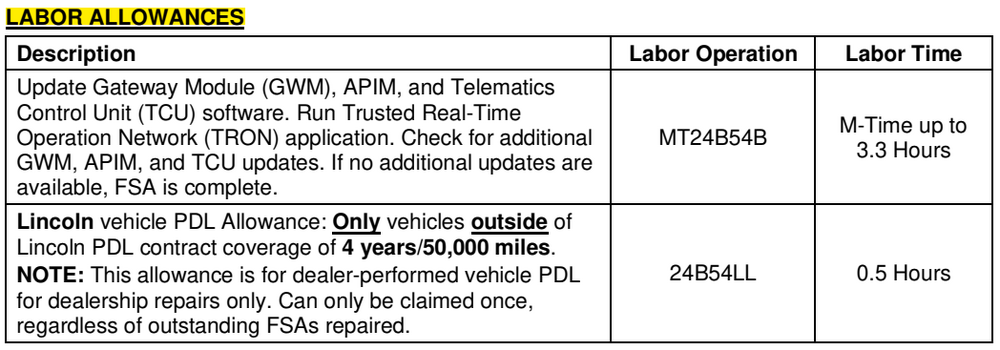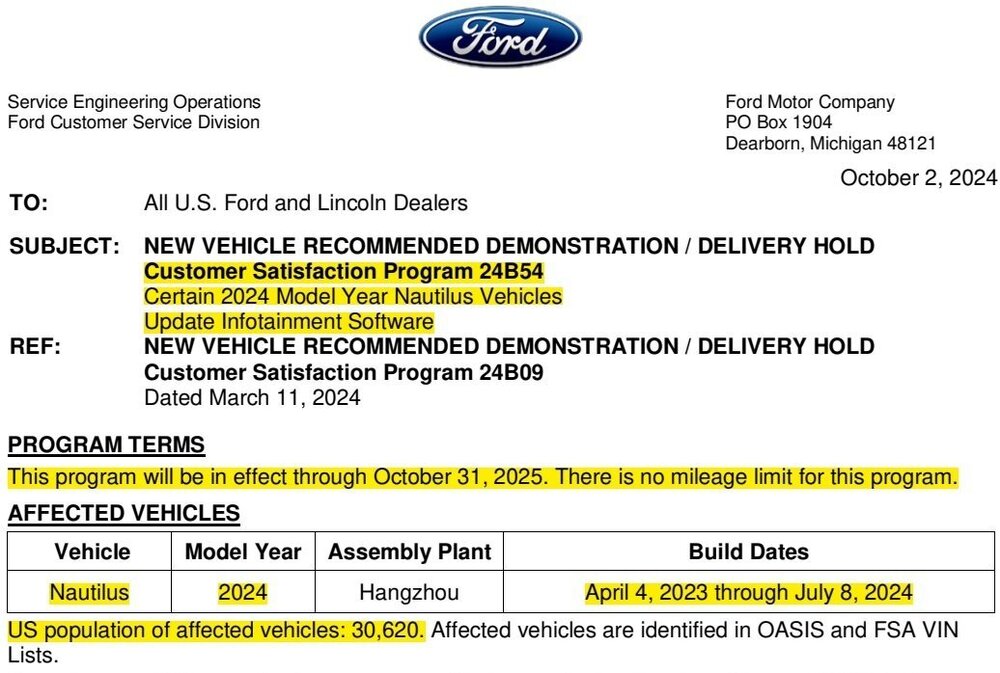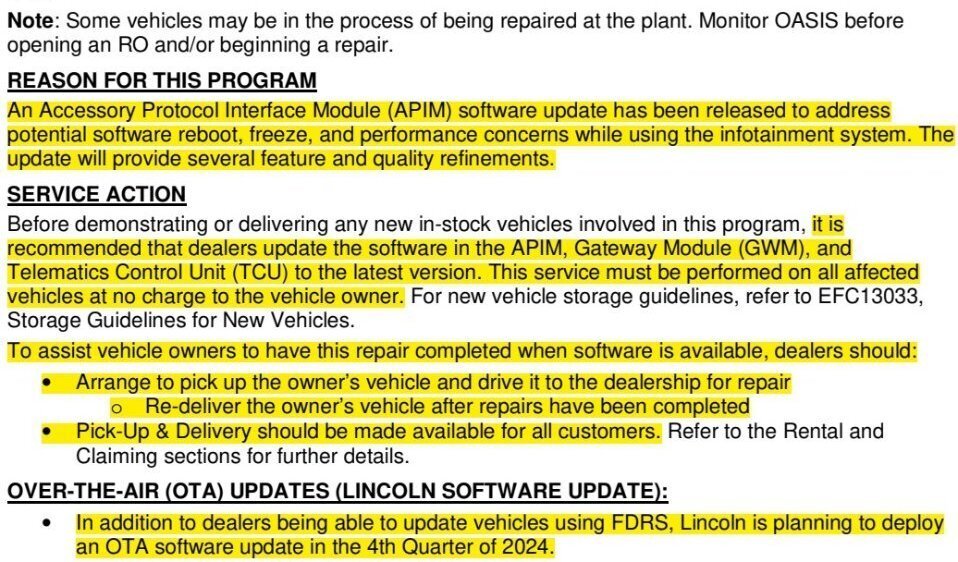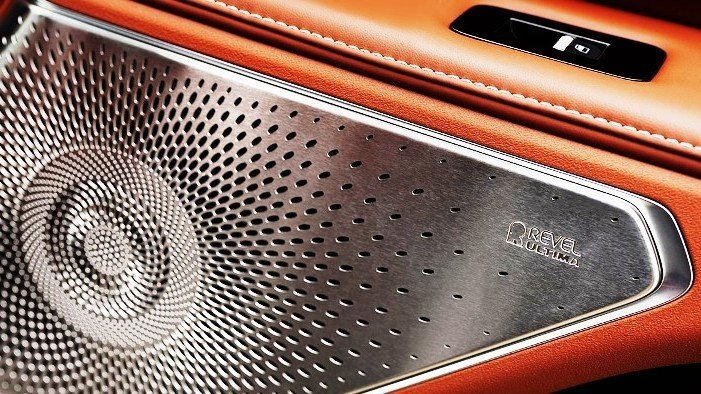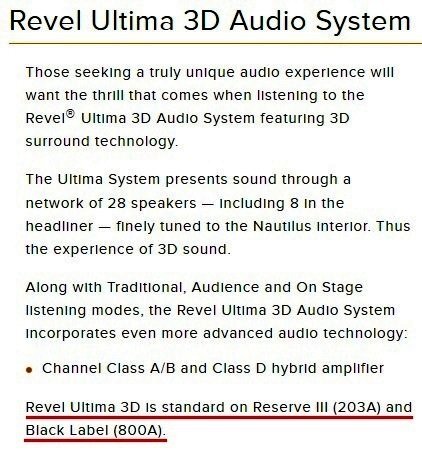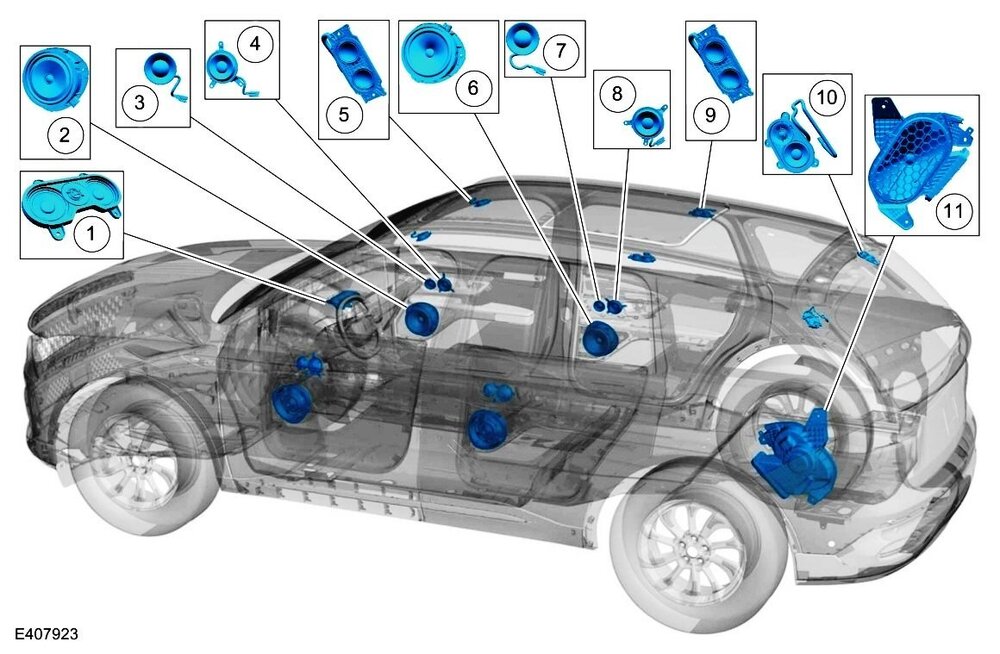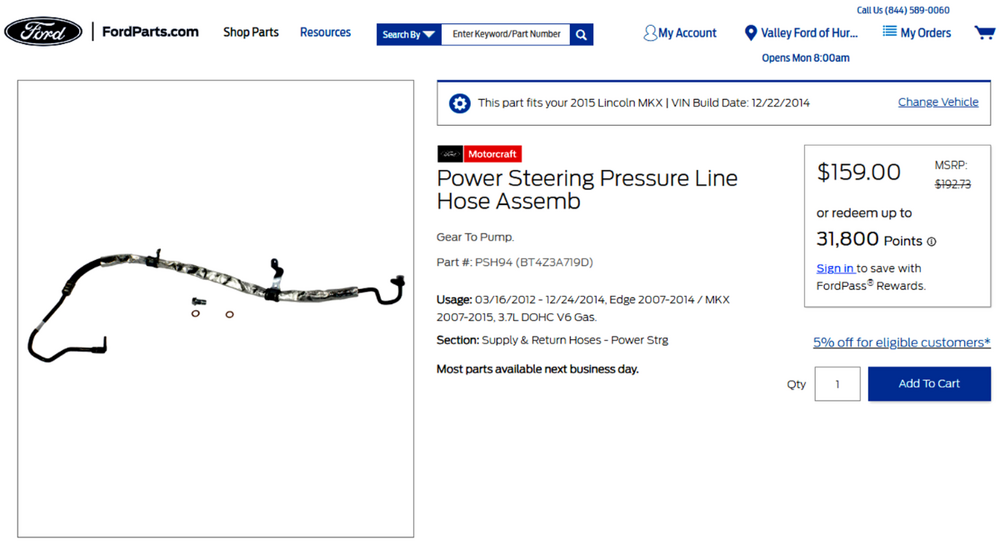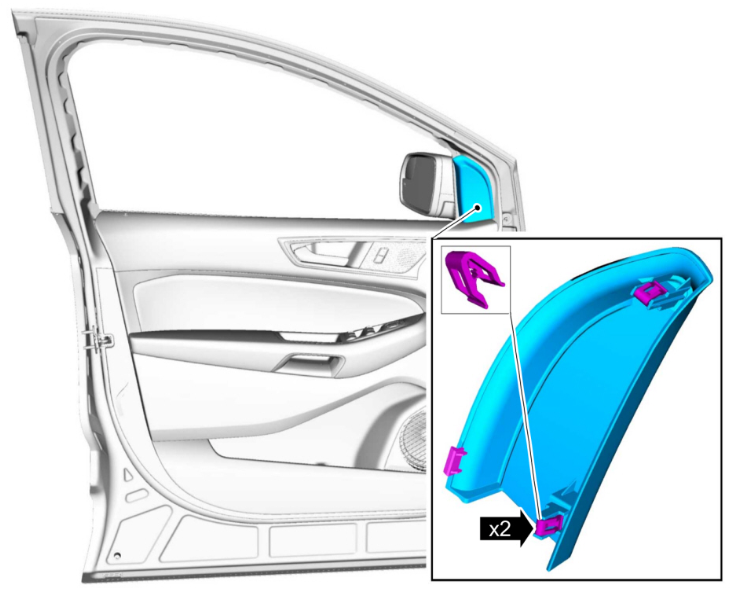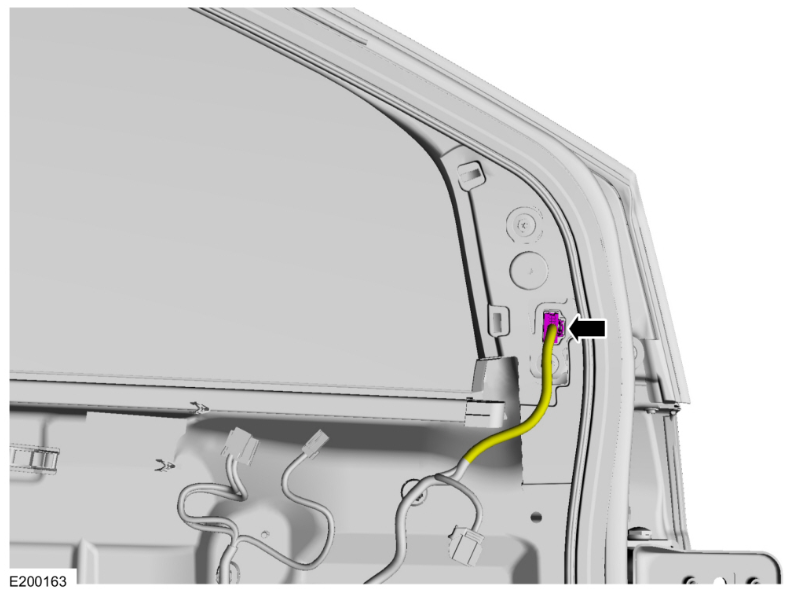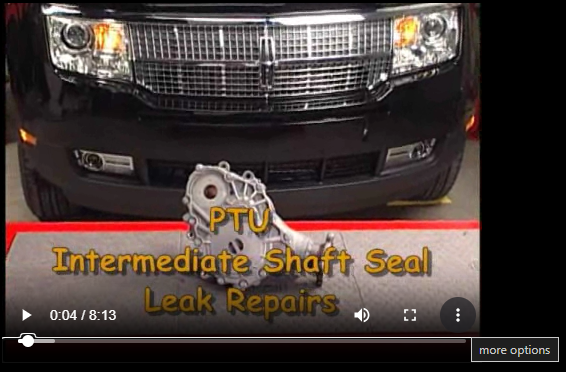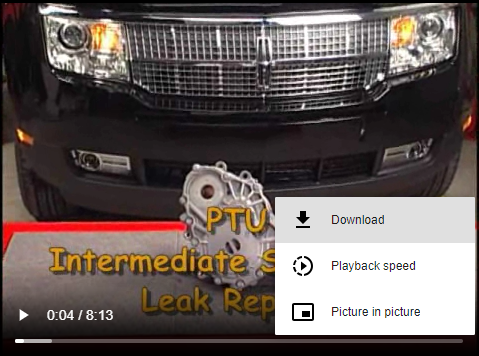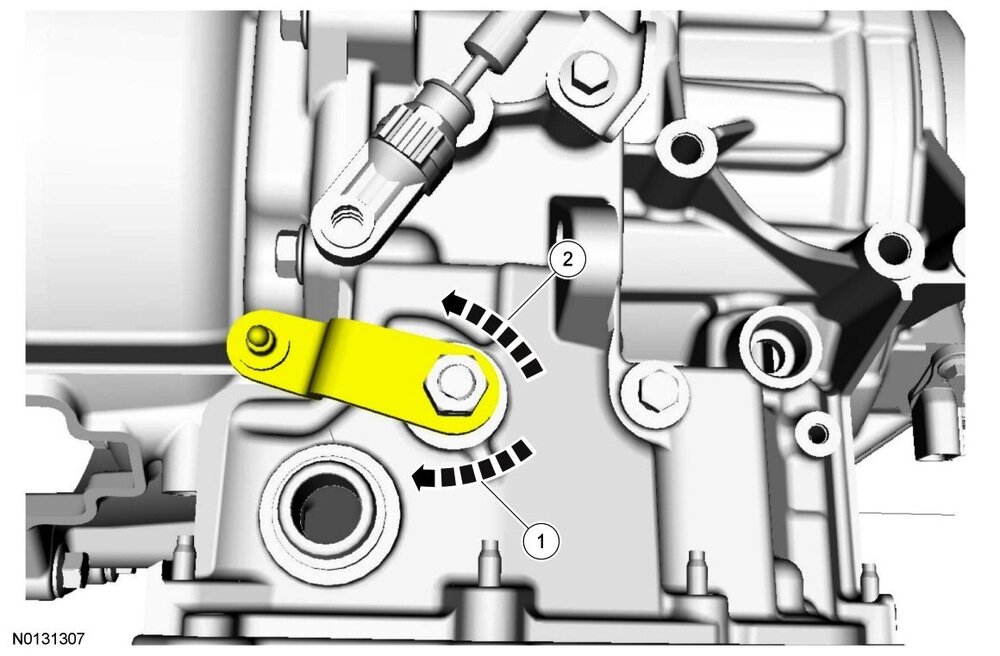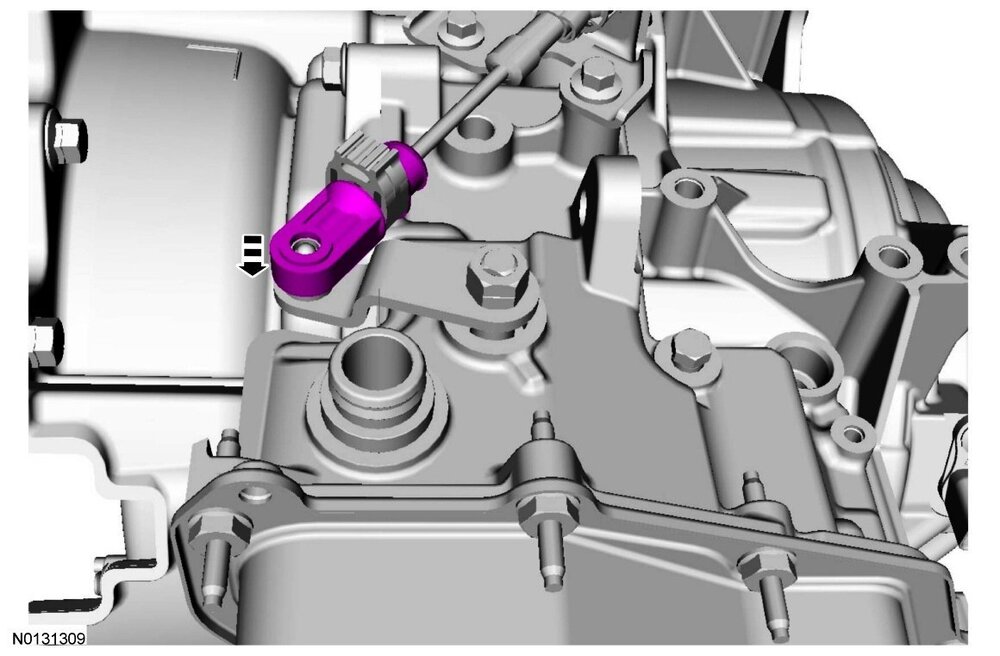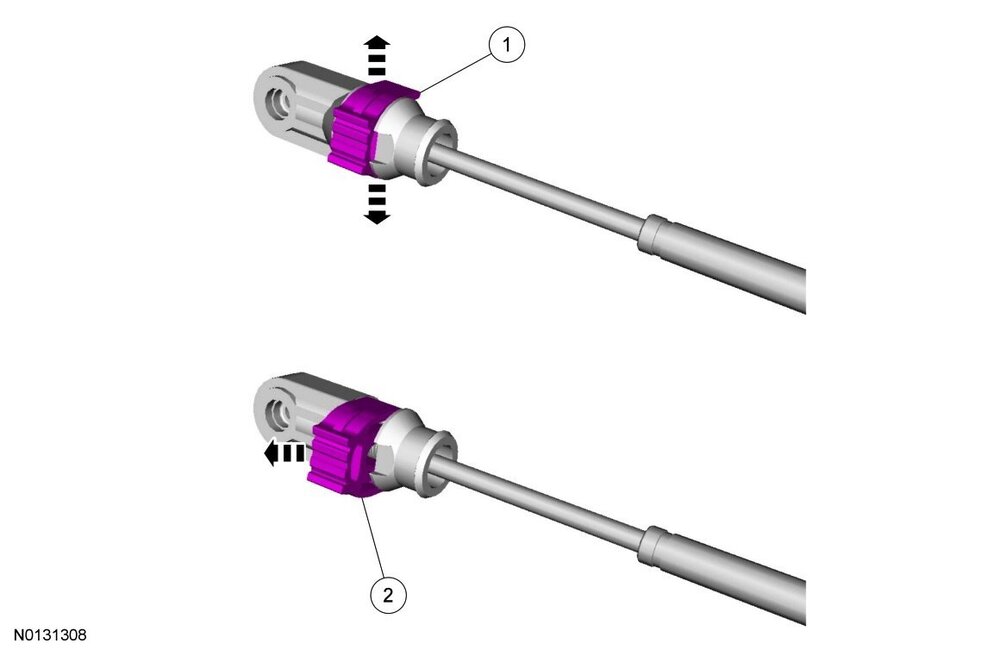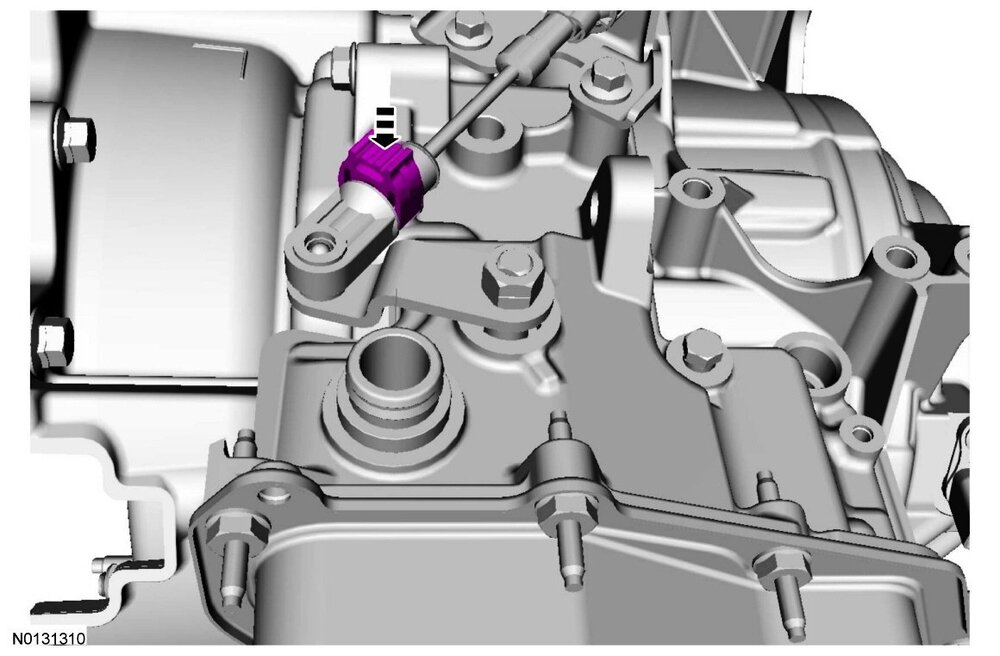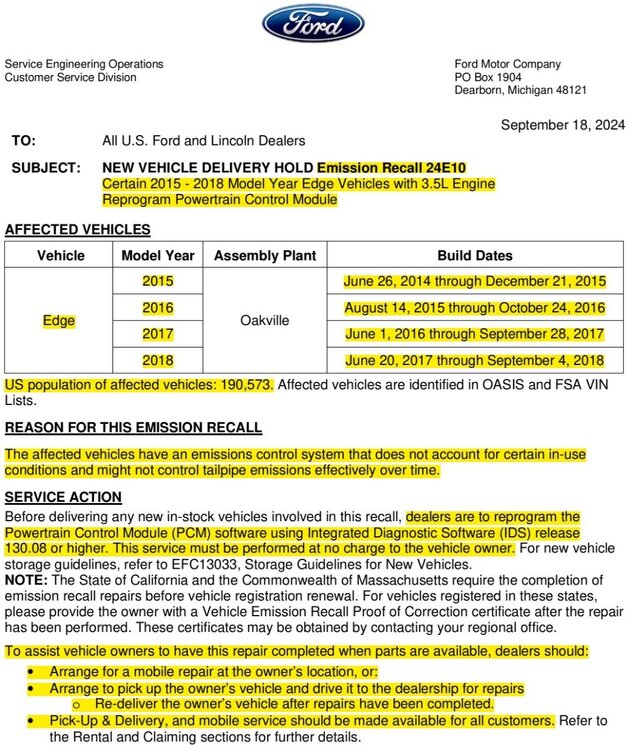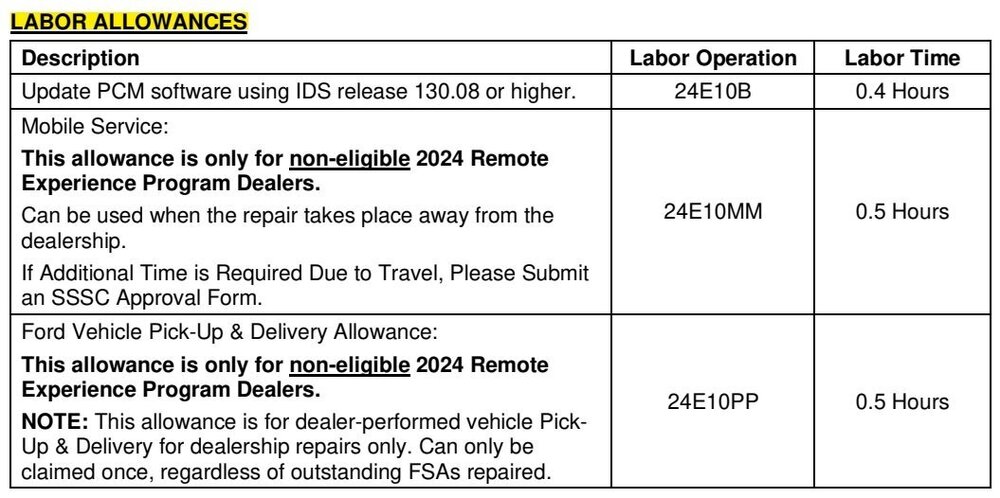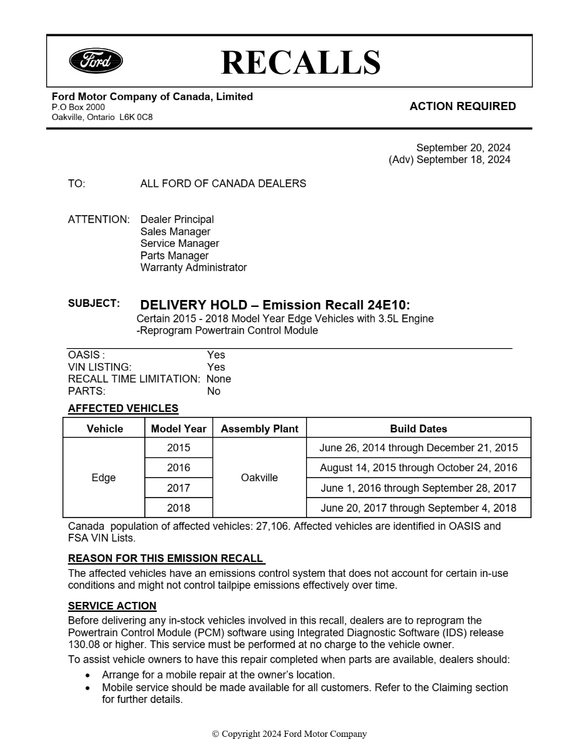

Haz
Edge Member-
Posts
1,568 -
Joined
-
Last visited
-
Days Won
435
Content Type
Profiles
Forums
Gallery
Everything posted by Haz
-
Your canine appears to be asking "What color is it now?" Good luck!
-
Welcome to the Forum @Ashley S! Original Recall info and subsequent discussion can be found here... Safety Recall 22S43 - Certain 2015 - 2018 Edge + Other Models -- Transmission Shifter Cable Bushing Good luck!
-
This SSM applies to 2024 Nautilus Reserve III (203A) and 2024 Nautilus Black Label (800A) vehicles equipped with the 28-speaker Revel Ultima 3-D Audio System... SSM 53004 2024 Nautilus, 2025 Aviator - No Audio/Sound - 24 Channel Audio Digital Signal Processing Module (DSP) (Minor Feature Code IDBBN) No Communication Some 2024 Nautilus and 2025 Aviator vehicles equipped with a 24 channel audio digital signal processing module (DSP) (minor feature code IDBBN) may exhibit a no audio/sound condition with no communication with DSP. To confirm a vehicle is built with a certain minor feature code, review the build information by double-clicking the vehicle identification number (VIN) in the upper left corner in the Professional Technician System (PTS). This concern may be due to software in the DSP. To determine if it is a software concern, remove the Nautilus DSP fuse F138 and inspect the fuse for an open and make sure the fuse has proper blade contact. After one minute, reinstall the good fuse. If the concern is still present or a fuse concern is found, continue with normal Workshop Manual diagnostics, Section 415-00 Information and Entertainment System > General Information > Diagnosis and Testing. If communication has been re-established with the DSP, reprogram the DSP using the latest software level of the Ford Diagnosis and Repair System (FDRS) scan tool. For claiming, use causal part 18B849 and applicable labor operations in Section 10 of the Service Labor Time Standards (SLTS) Manual. 28-Speaker System Item Description 1 Instrument panel center speaker (counts as 3 speakers) 2 Left/right front door woofer speakers 3 Left/right front door tweeter speakers 4 Left/right front door midrange speakers 5 Front overhead speakers (counts as 2 speakers each) 6 Left/right rear door woofer speakers 7 Left/right rear door tweeter speakers 8 Left/right rear door midrange speakers 9 Rear overhead speakers (counts as 2 speakers each) 10 Left/right D-pillar speakers (counts as 2 speakers each) 11 Subwoofer speaker Audio/Connectivity/Infotainment System Hidden Components Item Description 1 AM / FM antenna isolator filter 2 TCU 3 ACM 4 ANC microphones 5 Voice microphones 6 SIMA (left steering wheel switch) 7 APIM 8 DSP (13/28 speaker) 9 Subwoofer amplifier 10 AM / FM 1 antenna amplifier
-
Welcome to the Forum @skidatyl! Since your Edge most recently suffered an engine compartment fire, it seems unlikely it's still fitted with its original Power Steering Pressure Line Hose, but since you only mention O-ring replacements, this Special Service Message (SSM) from February 2015 states the hose installed on vehicles built after December 2, 2014 was in some way changed... SSM 44951 2011-2014 Edge And 2011-2015 MKX - Excessive Power Steering Noise When Performing Low Speed Turning Manuvers - Built On Or Before 12/2/2014 Some 2011-2014 Edge and 2011-2015 MKX vehicles built on or before 12/2/2014, equipped with 3.5L or 3.7L engines, may exhibit a whine, hiss, and/or howling noise that can be heard with all windows up when performing low speed turning maneuvers. To correct this concern replace the power steering pressure line with part number BT4Z-3A719-D and applicable service kit 8E5Z-3A705-A. Refer to Workshop Manual, Section 211-02. Use applicable labor operation(s) from Section 3 of the SLTS manual. The cited part number remains the recommended Service replacement part, including for my own 2015 MKX built after the SSM's December 2, 2014 cutoff date... Link to this FordParts webpage So, while the SSM cites the new part's correction of Noise Vibration Harshness (NVH) symptoms, perhaps the revised hose can provide other benefits. Good luck! Power Steering Pump to Steering Gear Pressure Line — 3.5L, 3.7L - Removal and Installation - 2013 Edge Workshop Manual.pdf Power Steering Pump to Steering Gear Pressure Line — 2.0L GTDI - Removal and Installation - 2013 Edge Workshop Manual.pdf
-
@dabangsta: Try conducting your ACC brake activation test at night on an unlit road with no following vehicle, perhaps with a helper driving in front of your Edge to induce its ACC braking. Brake light activation should be evident in your Edge's cargo area and/or in your Edge's exterior rear-view mirrors. Good luck!
-

Heated Mirror Question
Haz replied to BMWR1200c's topic in Glass, Lenses, Lighting, Mirrors, Sunroof (BAMR), Wipers
If the Heated Rear Window tests as enabled/operable, then to test if Exterior Mirror Heat is enabled/operable... A2 CHECK THE LEFT HAND (LH) AND RIGHT HAND (RH) EXTERIOR MIRROR HEAT VOLTAGE Ignition OFF. Disconnect: Exterior Mirror Electrical Connectors C516 (LH) and C601 (RH). NOTE: LH side shown, RH side similar. Release the clips and remove the sail panel. Disconnect the exterior mirror electrical connector. Start the engine. Activate the rear window defrost switch. Measure: Positive Lead Measurement / Action Negative Lead C516 (LH) Pin 2 and C601 (RH) Pin 2 Ground Is the voltage greater than 11 volts? Relevant 2020 Edge exterior mirror information is attached as below as PDF documents... Good luck! Heated Mirrors - Wiring Diagram - 2020 Edge.pdf Exterior Mirror, LH - Connector C516 Location - 2020 Edge.pdf Exterior Mirror, LH - Connector C516 Pinout - 2020 Edge.pdf Exterior Mirror, RH - Connector C601 Location - 2020 Edge.pdf Exterior Mirror, RH - Connector C601 Pinout - 2020 Edge.pdf Exterior Mirror - Removal and Installation - 2020 Edge Workshop Manual.pdf -

Heated Mirror Question
Haz replied to BMWR1200c's topic in Glass, Lenses, Lighting, Mirrors, Sunroof (BAMR), Wipers
From the 2020 Edge Workshop Manual... System Operation - Exterior, Heated Mirrors The rear window defrost system controls the operation of the heated exterior mirror glass and, if equipped, the heated spotter mirror glass. The heated exterior mirror glass and the heated spotter mirror glass only operates when the rear window defrost system is active. The heated mirrors are heated for a period of 10 minutes when the engine is running and the rear window defrost system is activated. To verify if the rear window defrost system is enabled... A2 CHECK THE REAR WINDOW DEFROST GRID VOLTAGE Ignition OFF. Disconnect: Heated Rear Window Element C402A. Start the engine. Activate the rear window defrost switch. Measure: Positive Lead Measurement / Action Negative Lead C402A Pin 1 Ground Is the voltage greater than 11 volts? Relevant 2020 Edge heated rear window information is attached as below as PDF documents... Good luck! HEATED REAR WINDOW ELEMENT - Wiring Diagram - 2020 Edge.pdf HEATED REAR WINDOW ELEMENT - Connector C402A Location - 2020 Edge.pdf HEATED REAR WINDOW ELEMENT - Connector C402A Pinout - 2020 Edge.pdf -
SSM 52967 Various Ford And Lincoln Vehicles - Passive Key Will Not Program Some of the following vehicles may exhibit a condition where the passive key will not program to the vehicles: * 2024 F-150 non-Lightning * 2023-2024 F-Super Duty * 2025 Explore/Aviator * 2024 Nautilus * 2024 Mustang vehicles built on or after 31-May-2024 * 2024 Bronco vehicles built on or after 01-June-2024 If a key does not program, rotate the key 180 degrees in the passive key backup starting location versus what is recommended in the Owners Manual Section > "Starting and Stopping the Engine - Accessing the Passive Key Backup Position" and then reattempt programing. If the key still does not program, refer to Workshop Manual (WSM), Section 419-01 for normal diagnostics. SSM 52980 Various Ford And Lincoln Vehicles - One Passive Key Does Not Start The Vehicle, RKE Button Functionality Works Some of the following vehicles may exhibit one passive key that is unable to start the vehicle or activate the passive entry feature; however, all remote keyless entry (RKE) physical button functionality works correctly and the second passive key will have full/correct functionality (including being able to start the vehicle): * 2024 F-150 non-Lightning * 2023-2024 F-Super Duty * 2025 Explore/Aviator * 2024 Nautilus * 2024 Mustang vehicles built on or after 31-May-2024 * 2024 Bronco vehicles built on or after 01-June-2024 This may be due to a partial programming of a passive key from the factory. To correct this condition, use the Ford Diagnosis and Repair System (FDRS) scan tool to erase all keys and then program all keys back to the vehicle. Refer to the Workshop Manual, Section 419-01. If a key fails to program, rotate the key 180 degrees in the passive key backup starting location versus what is recommended in the Owners Manual Section > "Starting and Stopping the Engine - Accessing the Passive Key Backup Position" and then reattempt programing. For claiming, use causal part 15K601 and applicable labor operations in Section 10 of the Service Labor Time Standards (SLTS) Manual.
-

Transfer case or differential for axle shaft
Haz replied to rans's topic in Brakes, Chassis & Suspension
Welcome to the Forum @rans! You are referring to the Intermediate Shaft Seal and its Dust Shield in your Edge's Power Transfer Unit (PTU). Workshop Manual descriptions and procedures relevant to these components are attached below as PDF documents... Clicking on the following links will lead to the described resource: Ford Service Video - Describes removal and installation procedure for Intermediate Shaft Seal and Dust Shield Special Tool - Halfshaft Remover Special Tool - PTU Intermediate Shaft Seal Installer Special Tool - PTU Intermediate Shaft Dust Shield Installer Please be aware that the online Ford Service Video player provides a lower right-hand corner menu button to download the video file, allowing direct viewing of the video procedure on a smartphone or tablet while performing the procedure... Good luck! Intermediate Shaft — All Wheel Drive (AWD) - Removal and Installation - 2007 Edge Workshop Manual.pdf Intermediate Shaft — All Wheel Drive (AWD) - Removal and Installation - ENANCED IMAGE - 2007 Edge Workshop Manual.pdf Intermediate Shaft Seal and Deflector - Power Transfer Unit (PTU) - In Vehicle Repair - 2007 Edge Workshop Manual.pdf Halfshaft — RH - Removal and Installation - 2007 Edge Workshop Manual.pdf Four Wheel Drive (4WD) Systems - Description and Operation - 2007 Edge Workshop Manual.pdf Front Drive Halfshafts - Description and Operation - 2007 Edge Workshop Manual.pdf Driveline System - Description and Operation - 2007 Edge Workshop Manual.pdf -

DDM and PDM Wiring Diagram / Door Power Source 2015-2024
Haz replied to Wubster100's topic in Accessories & Modifications
Per your request, attached below as PDF documents... Good luck! Driver & Passenger Door Modules - Power Distribution Wiring Diagram - 2021 Edge.pdf DRIVER DOOR MODULE (DDM) - Connector C501A Pinout Diagram - 2021 Edge.pdf DRIVER DOOR MODULE (DDM) - Connector C501B Pinout Diagram - 2021 Edge.pdf DRIVER DOOR MODULE (DDM) - Connectors C501A & C501B Location - 2021 Edge.pdf PASSENGER DOOR MODULE (PDM) - Connector C652A Pinout Diagram - 2021 Edge.pdf PASSENGER DOOR MODULE (PDM) - Connector C652B Pinout Diagram - 2021 Edge.pdf PASSENGER DOOR MODULE (PDM) - Connectors C652A & C652B Location - 2021 Edge.pdf Driver Door Module (DDM) - Ground Wiring Diagram - 2021 Edge.pdf Passenger Door Module (PDM) - Ground Wiring Diagram - 2021 Edge.pdf -
DSSH Is Expanding To Add GWM And TCU - Ford Professional Technician System (PTS) "What's New" message - September 20, 2024 The Dealer Support Software Hotline (DSSH) is expanding to include 2023 and later Gateway Module (GWM) and 2023 and later Telematic Control Unit (TCU) for USA dealers only on September 23, 2024. The GWM and TCU modules will now require a repair validation code (RVC) to order, codes will be provided by the DSSH team when module replacement is supported. GWM and TCU part number will be set with K Codes and dealerships will need to call 1-800-842-2474 to place an order and provide P&A code, VIN, RVC code, and part number. Connected vehicles service concerns will now be supported as well through the DSSH process. Announcing the Dealer Software Support Hotline (DSSH) Update Always use the PTS Diagnostics Tab and Workshop Manual to determine the correct diagnostic for your vehicle concern. Modules in this chart require a Repair Validation Code (RVC) using the following process: Red – This module requires an RVC obtained through Pinpoint Tests, Guided Routines or provided by the DSSH when module replacement is supported by diagnostics. Yellow - This module requires an RVC obtained through the DSSH when module replacement is supported by diagnostics. Green - This module requires an RVC obtained through Pinpoint Tests, Guided Routines or Manual RVC creation. IMPORTANT: If you are required to submit a Technical Support Request (TSR) to the DSSH you must do this prior to module removal. Components Requiring a Repair Validation Code (RVC) for Warranty* (updated 09/2024) *This chart is a general guideline. Specific vehicle coverage must be confirmed using warranty start date or mileage and country or state regulations. These warranty-related charts do not include Ford or Lincoln Protect RVC requirements. Ford or Lincoln Protect extended warranty policies generally require an RVC when provided by the guided routines. 2018 Model Year Vehicle Powertrain Control Module (PCM) -12A650- 2018 C-MAX Hybrid Green 2018 Continental Green 2018 E-350/450 2018 EcoSport Green 2018 Edge Green 2018 Escape Green 2018 Expedition Green 2018 Explorer Green 2018 F-250-550 Super Duty 2018 F-53 Motorhome/F-59 Strip Chassis 2018 Fiesta Green 2018 Flex Green 2018 Focus Green 2018 Focus RS Green 2018 Fusion Green 2018 MKC Green 2018 MKT Green 2018 MKX Green 2018 MKZ Green 2018 Mustang Green 2018 Navigator Green 2018 Taurus Green 2018 Transit Green 2018 Transit Connect Green 2019 Model Year Vehicle Powertrain Control Module (PCM) -12A650- 2019 Continental Green 2019 E-350/450 Green 2019 EcoSport Green 2019 Edge Green 2019 Escape Green 2019 Expedition Green 2019 Explorer Green 2019 F-150 Green 2019 F-250-550 Super Duty Green 2019 F-53 Motorhome/F-59 Strip Chassis Green 2019 Fiesta Green 2019 Flex Green 2019 Fusion Green 2019 MKC Green 2019 MKT Green 2019 MKZ Green 2019 Mustang Green 2019 Nautilus Green 2019 Navigator Green 2019 Ranger Green 2019 Taurus Green 2019 Transit Green 2019 Transit Connect Green 2020 Model Year Vehicle SYNC Accessory Protocol Interface Module (APIM) -14G371 / 14G670- Display Screen Equipped with SYNC -10D885- Powertrain Control Module (PCM) -12A650- Power Steering Control Module (PSCM) -3504- Body Control Module (BCM) -15604- Electric Brake Booster (EBB) -2005- Steering Effort Control Module (SECM) -3600- Anti-Lock Brake Module (ABS) Hydraulic Control Unit (HCU) 2C219 / 2C215 / 2B373 2C405 / 2C286 / 2B513 Heating, Ventilation and Air Conditioning Module (HVAC) -19980- Front Controls Interface Module (FCIM) -18842- Instrument Panel Cluster (IPC) -10849- Glow Plug Control Module (GPCM) -12B533- 2020 Aviator Green Green Green Green Green Green 2020 Continental Green Green Green Green Green Green Green Green 2020 Corsair Green Green Green Green Green Green Green 2020 EcoSport Green Green Green Green Green 2020 Edge Green Green Green Green Green Green Green Green 2020 Escape Green Green Green Green Green Green Green 2020 Expedition Green Green Green Green Green Green 2020 Explorer Green Green Green Green Green Green Green 2020 F-150 Green Green Green Green Green Green Green Green Green 2020 F-250-600 Super Duty Green Green Green Green Green Green Green Green Green 2020 F-53 Motorhome/F-59 Strip Chassis Green Green 2020 Fusion Green Green Green Green Green Green Green Green 2020 MKZ Green Green Green Green Green Green Green Green 2020 Mustang Green Green Green Green Green Green Green Green 2020 Nautilus Green Green Green Green Green Green Green Green 2020 Navigator Green Green Green Green Green Green 2020 Ranger Green Green Green Green Green Green 2020 Transit Green Green Green Green Green Green Green 2020 Transit Connect Green Green Green Green Green Green 2021 Model Year Vehicle SYNC Accessory Protocol Interface Module (APIM) -14G371 / 14G670- Display Screen Equipped with SYNC -10D885- Powertrain Control Module (PCM) -12A650- Power Steering Control Module (PSCM) -3504- 2021 Aviator Red Green Green 2021 Bronco Red Green Green Green 2021 Bronco Sport Red Green Green Green 2021 Corsair Red Green Green 2021 E-350/450 Red Green Green 2021 EcoSport Red Green Green 2021 Edge Red Green Green 2021 Escape Red Green Green 2021 Expedition Red Green Green 2021 Explorer Red Green Green 2021 F-150 Red Green Green Green 2021 F-250-600 Super Duty Red Green Green 2021 F-53 Motorhome/F-59 Strip Chassis Green 2021 F-650/750 Red Green Green 2021 Mustang Red Green Green 2021 Mustang Mach-E Red Green Green Green 2021 Nautilus Red Green Green 2021 Navigator Red Green Green 2021 Ranger Red Green Green 2021 Transit Red Green Green Green 2021 Transit Connect Red Green Green 2022 Model Year Vehicle SYNC Accessory Protocol Interface Module (APIM) -14G371 / 14G670- Display Screen Equipped with SYNC -10D885- Image Processing Module A (IPMA) -14G647 / 19H406- Image Processing Module B (IPMB) -19H405- Powertrain Control Module (PCM) -12A650- Power Steering Control Module (PSCM) -3504- 2022 Aviator Red Green Yellow Yellow Green 2022 Bronco Red Green Yellow Yellow Green Green 2022 Bronco Sport Red Green Yellow Yellow Green Green 2022 Corsair Red Green Yellow Yellow Green 2022 E-350/450 Red Green Yellow Green 2022 EcoSport Red Green Green 2022 Edge Red Green Yellow Yellow Green 2022 Escape Red Green Yellow Yellow Green 2022 Expedition Red Green Yellow Green 2022 Explorer Red Green Yellow Yellow Green 2022 F-150 Red Green Yellow Green Green 2022 F-250-600 Super Duty Red Green Yellow Yellow Green 2022 F-53 Motorhome/F-59 Strip Chassis Yellow Green 2022 F-650/750 Red Green Yellow Green 2022 Maverick Red Green Yellow Green Green 2022 Mustang Red Green Yellow Green 2022 Mustang Mach-E Red Green Yellow Green Green 2022 Nautilus Red Green Yellow Yellow Green 2022 Navigator Red Green Yellow Green 2022 Ranger Red Green Yellow Green 2022 Transit Red Green Yellow Yellow Green Green 2022 Transit Connect Red Green Yellow Green 2023 Model Year Vehicle SYNC Accessory Protocol Interface Module (APIM) -14G371 / 14G670- Display Screen Equipped with SYNC -10D885- Image Processing Module A (IPMA) -14G647 / 19H406- Image Processing Module B (IPMB) -19H405- Powertrain Control Module (PCM) -12A650- Power Steering Control Module (PSCM) -3504- Body Control Module (BCM) -15604- Gateway Module (GWM) -14G650 / 14H474- Telematics Control Unit (TCU) 14H074 / 14H076 / 14H316 2023 Aviator Red Green Yellow Yellow Red Yellow Yellow Yellow 2023 Bronco Red Green Yellow Yellow Red Green Yellow Yellow Yellow 2023 Bronco Sport Red Green Yellow Yellow Red Green Yellow Yellow Yellow 2023 Corsair Red Green Yellow Red Yellow Yellow Yellow 2023 E-350/450 Red Green Yellow Red Yellow Yellow Yellow 2023 Edge Red Green Yellow Yellow Red Yellow Yellow Yellow 2023 Escape Red Green Yellow Red Yellow Yellow Yellow 2023 Expedition Red Green Yellow Red Yellow Yellow Yellow 2023 Explorer Red Green Yellow Yellow Red Yellow Yellow Yellow 2023 F-150 Red Green Yellow Red Green Yellow Yellow Yellow 2023 F-250-600 Super Duty Red Green Yellow Red Green Yellow Yellow Yellow 2023 F-53 Motorhome/F-59 Strip Chassis Yellow Red Yellow Yellow Yellow 2023 F-650/750 Red Green Yellow Red Yellow Yellow Yellow 2023 Maverick Red Green Yellow Red Green Yellow Yellow Yellow 2023 Mustang Red Green Yellow Red Yellow Yellow Yellow 2023 Mustang Mach-E Red Green Yellow Red Green Yellow Yellow Yellow 2023 Nautilus Red Green Yellow Yellow Red Yellow Yellow Yellow 2023 Navigator Red Green Yellow Red Yellow Yellow Yellow 2023 Ranger Red Green Yellow Red Yellow Yellow Yellow 2023 Transit Red Green Yellow Yellow Red Green Yellow Yellow Yellow 2023 Transit Connect Red Green Yellow Red Yellow Yellow Yellow 2024 Model Year Vehicle SYNC Accessory Protocol Interface Module (APIM) -14G371 / 14G670- Display Screen Equipped with SYNC -10D885- Image Processing Module A (IPMA) -14G647 / 19H406- Image Processing Module B (IPMB) -19H405- Powertrain Control Module (PCM) -12A650- Power Steering Control Module (PSCM) -3504- Body Control Module (BCM) -15604- Gateway Module (GWM) -14G650 / 14H474- Telematics Control Unit (TCU) 14H074 / 14H076 / 14H316 2024 Aviator Red Green Yellow Yellow Red Yellow Yellow Yellow 2024 Bronco Red Green Yellow Yellow Red Green Yellow Yellow Yellow 2024 Bronco Sport Red Green Yellow Yellow Red Green Yellow Yellow Yellow 2024 Corsair Red Green Yellow Red Yellow Yellow Yellow 2024 E-350/450 Red Green Yellow Red Yellow Yellow Yellow 2024 Edge Red Green Yellow Yellow Red Yellow Yellow Yellow 2024 Escape Red Green Yellow Red Yellow Yellow Yellow 2024 Expedition Red Green Yellow Red Yellow Yellow Yellow 2024 Explorer Red Green Yellow Yellow Red Yellow Yellow Yellow 2024 F-150 Red Green Yellow Red Green Yellow Yellow Yellow 2024 F-250-600 Super Duty Red Green Yellow Red Green Yellow Yellow Yellow 2024 F-53 Motorhome/F-59 Strip Chassis Yellow Red Yellow Yellow Yellow 2024 F-650/750 Red Green Yellow Red Yellow Yellow Yellow 2024 Maverick Red Green Yellow Red Green Yellow Yellow Yellow 2024 Mustang Red Green Yellow Red Yellow Yellow Yellow 2024 Mustang Mach-E Red Green Yellow Red Green Yellow Yellow Yellow 2024 Nautilus Red Green Yellow Red Yellow Yellow Yellow 2024 Navigator Red Green Yellow Red Yellow Yellow Yellow 2024 Ranger Red Green Yellow Red Yellow Yellow Yellow 2024 Transit Red Green Yellow Yellow Red Green Yellow Yellow Yellow 2025 Model Year Vehicle SYNC Accessory Protocol Interface Module (APIM) -14G371 / 14G670- Display Screen Equipped with SYNC -10D885- Image Processing Module A (IPMA) -14G647 / 19H406- Image Processing Module B (IPMB) -19H405- Powertrain Control Module (PCM) -12A650- Power Steering Control Module (PSCM) -3504- Body Control Module (BCM) -15604- Gateway Module (GWM) -14G650 / 14H474- Telematics Control Unit (TCU) 14H074 / 14H076 / 14H316 2025 Aviator Red Green Yellow Red Yellow Yellow Yellow 2025 Bronco Red Green Yellow Yellow Red Green Yellow Yellow Yellow 2025 Bronco Sport Red Green Yellow Red Green Yellow Yellow Yellow 2025 Corsair Red Green Yellow Red Yellow Yellow Yellow 2025 E-350/450 Red Green Red Yellow Yellow Yellow 2025 Escape Red Green Yellow Red Yellow Yellow Yellow 2025 Expedition Red Green Yellow Red Yellow Yellow Yellow 2025 Explorer Red Green Yellow Red Yellow Yellow Yellow 2025 F-150 Red Green Yellow Red Green Yellow Yellow Yellow 2025 F-250-600 Super Duty Red Green Yellow Red Green Yellow Yellow Yellow 2025 F-53 Motorhome/F-59 Strip Chassis Red Yellow Yellow Yellow 2025 F-650/750 Red Green Red Yellow Yellow Yellow 2025 Maverick Red Green Yellow Red Green Yellow Yellow Yellow 2025 Mustang Red Green Yellow Red Yellow Yellow Yellow 2025 Mustang Mach-E Red Green Yellow Red Green Yellow Yellow Yellow 2025 Navigator Red Green Yellow Red Yellow Yellow Yellow 2025 Ranger Red Green Yellow Red Yellow Yellow Yellow 2025 Transit Red Green Yellow Red Green Yellow Yellow Yellow
-
Welcome to the Forum @ProjectPat! Are you certain the cable-end locking clip is fully engaged after you mount the shifter cable onto the ball stud of the manual shifter lever, as depicted below?... Carefully pry outward the adjuster lock tabs. While holding the adjuster lock tabs outward, slide the lock to unlock the selector lever cable... NOTICE: To prevent selector lever cable damage, do not apply force to the selector lever cable between the manual control lever and the selector lever cable bracket. NOTE: Make sure that the selector lever cable end is correctly installed onto the manual control lever ball stud by pulling back on the selector lever cable end... NOTE: After locking the adjuster, pull back on the adjuster to make sure it is securely installed... This 2013 Edge Workshop Manual procedure is also attached below as a PDF document... Good luck! Selector Lever Cable Adjustment — 6F35 - General Procedures - 2013 Edge Workshop Manual.pdf
-

2011 Edge Cooling Fans not running
Haz replied to atrdriver's topic in Interior, A.C., Heat, Interior Trim
Welcome to the Forum @Pat cochran and @Steves24! Link to previously posted 2011 Edge cooling fan diagnostic procedure and Workshop Manual sections. Good luck! -
SSM 52925 - 2020-2024 Corsair/Explorer/Aviator, 2021-2024 F-150/Bronco/Mach-E, 2023-2024 F-Super Duty, 2024-2025 Nautilus - Overhead Console Sunglass Bin Broken Some 2020-2024 Explorer/Aviator/Corsair, 2021-2024 F-150/Bronco, 2023-2024 F-Super Duty, and 2024-2025 Nautilus vehicles may experience the overhead console sunglass bin cannot be locked in a closed position. This may be due to a broken sunglass bin. The sunglass bin is now available order (base part number 7811586). To correct the condition, refer to Workshop Manual (WSM), Section 501-12 to replace the sunglass bin.
-
Welcome to the Forum @jmaurath! Per your request, relevant Workshop Manual sections are attached below as PDF documents... Good luck! Air Conditioning (AC) Compressor — 3.5L, 3.7L - Removal and Installation - 2013 Edge Workshop Manual.pdf Air Conditioning (AC) System Flushing - General Procedures - 2013 Edge Workshop Manual.pdf Desiccant Bag - Removal and Installation - 2013 Edge Workshop Manual.pdf Condenser Core — 3.5L, 3.7L - Removal and Installation - 2013 Edge Workshop Manual.pdf Refrigerant Oil Adding - General Procedures - 2013 Edge Workshop Manual.pdf Air Conditioning (AC) System Recovery, Evacuation and Charging - General Procedures - 2013 Edge Workshop Manual.pdf Refrigerant Identification Testing - General Procedures - 2013 Edge Workshop Manual.pdf Fluorescent Dye Leak Detection - General Procedures - 2013 Edge Workshop Manual.pdf Radiator — 3.5L, 3.7L - Removal and Installation - 2013 Edge Workshop Manual.pdf Thermostatic Expansion Valve — 3.5L, 3.7L - Removal and Installation - 2013 Edge Workshop Manual.pdf Fender Splash Shield - Removal and Installation - 2013 Edge Workshop Manual.pdf 2013 Edge AC Compressor Mounting - Enhanced Illustration - Exploded View with screws.pdf 2013 Edge AC Compressor Mounting - Enhanced Illustration - Screw Tightening Sequence.pdf
-
It's worth noting that heated/ventilated driver and passenger seats were standard equipment on the 2024 Nautilus Premiere (101A/102A). The 2025 Nautilus Premiere (101A) is equipped with heated-only driver and passenger seats and the 2025 Nautilus Premiere (102A) is equipped with heated/ventilated driver and passenger seats. So, the 2025 Nautilus Premiere (101A) has been de-contented to heated-only front seats. Nautilus Workshop Manual descriptions of the front seat climate-control system are identical for the 2024 and 2025 model years... Placing your device cursor over underlined acronyms may yield popup full-words descriptions of the acronyms. Heated/Ventilated Seat Operation The heated/ventilated seat system consists of the following components: Seat cushion heater mat Seat backrest heater mat Blower motor, located within each front seat cushion and backrest Touchscreen (includes heated/ventilated seat buttons) DSM SCMB Cushion and backrest vent bags (part of the cushion and backrest foam) Air duct (bellow) Cushion and backrest foam Cushion and backrest trim covers The driver and passenger heated/ventilated seat buttons are selected from the touchscreen. The heated/ventilated seat system functions independently from the vehicle's climate control system. The driver front seat is controlled by the DSM . The passenger front seat is controlled by the SCMB . Heat Operation When activated, the DSM / SCMB supplies voltage to the selected seat heater circuit. Each seat cushion heater mat and backrest heater mat is connected in a series circuit to the DSM / SCMB and powered by the output circuit for that seat. The DSM / SCMB monitors inputs from a temperature sensor located in each seat cushion heater mat, and maintains seat temperature by cycling the heater circuits on/off. The heated seat remains ON until the heated seat switch button is pressed to cycle the DSM / SCMB OFF or the ignition is set to OFF. Ventilation Operation The seat cushion and backrest are each equipped with a blower motor assembly. Each blower motor draws air through the surface of the cushion and backrest through the foam. Once the system is activated, the DSM / SCMB controls the blower speed depending on the ventilated seat settings. Good luck!
-
SSM 52919 - 2025 Nautilus - Heated-Only Front Seats - DTCs B103A:15, B1034:13, B1036:13, And B1038:15 Setting In The HVAC Module When A Diagnostic Self-Test Is Performed Some 2025 Nautilus vehicles with heated-only front seats (minor feature code BY1AC) may set diagnostic trouble codes (DTCs) B103A:15, B1034:13, B1036:13, and B1038:15 in the heating, ventilation, and air conditioning (HVAC) module when a diagnostic self-test is performed. These DTCs have no affect on functionality, and should be ignored if no other DTCs are present in the HVAC and no symptoms are present. Continue with diagnosing any other HVAC DTCs first. No further service action is required.
-

2016 Edge engine compartment lower fuse box
Haz replied to gary_minnesota's topic in Interior, A.C., Heat, Interior Trim
@MKX ONTARIO: If you prefer to not disconnect the Rear Gate Trunk Module (RGTM) connector C4174A, you could disconnect Battery Junction Box (BJB) connector C1035B, which carries Fuse F76-protected power to the RGTM, and would limit any de-powering affect to the yellow-highlighted circuits/components shown below... Good luck! BATTERY JUNCTION BOX (BJB) - Connector C1035B Pinout Diagram - 2016 Edge.pdf BJB Legend 1 - Yellow Highlighted Circuits-Components Affected by BJB Connector C1035B Disconnection.pdf BJB Legend 2 - Yellow Highlighted Circuits-Components Affected by BJB Connector C1035B Disconnection.pdf BATTERY JUNCTION BOX (BJB) -Topside Illustration Showing Connector C1035B Location - 2016 Edge.pdf -

17 Sport - Bilstein B6 Struts with H&R Springs
Haz replied to bscott94's topic in Brakes, Chassis & Suspension
Ford's advice -- and cautions -- about vehicle jacking & lifting from the Edge Workshop Manual are attached below as a PDF document... Forum Member Emeritus @macbwt provides this guidance on his MACTFORDEDGE YouTube channel... How to safely Jack up the front of a Ford Edge and where to place jack stands Safe lift of the rear of a Ford Edge DIY Jack and Jack stand placement Good luck and work safely! Jacking and Lifting - Overview - 2022-2024 Edge Workshop Manual.pdf -

2016 Edge engine compartment lower fuse box
Haz replied to gary_minnesota's topic in Interior, A.C., Heat, Interior Trim
Welcome to the Forum @MKX ONTARIO! If you prefer, you can remove the Rear Gate Trunk Module (RGTM) power by accessing the RGTM and removing Connector C4174A from the RGTM for 20 seconds, and then reinsert Connector C4174A to fulfill the Power Liftgate Initialization procedure. Related Workshop Manual and Wiring Resource information is attached below as PDF documents... Good luck! REAR GATE TRUNK MODULE (RGTM) - Connector C4174A Pinout Diagram - 2016 Edge.pdf REAR GATE TRUNK MODULE (RGTM) - Connector C4174A Location - 2016 Edge.pdf REAR GATE TRUNK MODULE (RGTM) - Power Distribution Wiring Diagram - 2016 Edge.pdf Rear Gate Trunk Module (RGTM) - Removal and Installation - 2016 Edge Workshop Manual.pdf Audio Digital Signal Processing (DSP) Module - Removal and Installation - 2016 Edge Workshop Manual.pdf Loadspace Trim Panel - Removal and Installation - 2016 Edge Workshop Manual.pdf Power Liftgate Initialization - General Procedures - 2016 Edge Workshop Manual.pdf -

17 Sport - Bilstein B6 Struts with H&R Springs
Haz replied to bscott94's topic in Brakes, Chassis & Suspension
Additional... Good luck! Lower Arm, Rear Suspension - Removal and Installation - 2022-2024 Edge Workshop Manual.pdf Spring, Rear Suspension - Removal and Installation - 2022-2024 Edge Workshop Manual.pdf -

17 Sport - Bilstein B6 Struts with H&R Springs
Haz replied to bscott94's topic in Brakes, Chassis & Suspension
Welcome to the Forum @CaspaST! Per your request... Cowl Panel - Removal and Installation - 2022-2024 Edge Workshop Manual.pdf Cowl Panel Grille - Removal and Installation - 2022-2024 Edge Workshop Manual.pdf Windshield Wiper Pivot Arm - Removal and Installation - 2022-2024 Edge Workshop Manual.pdf Front Strut and Spring Assembly - Removal and Installation - 2022-2024 Edge Workshop Manual.pdf Front Stabilizer Bar Link - Removal and Installation - 2022-2024 Edge Workshop Manual.pdf Front Strut and Spring Assembly - Disassembly and Assembly - 2022-2024 Edge Workshop Manual.pdf Lower Arm - Removal and Installation - 2017 Edge Workshop Manual.pdf -
Additional related 2022-2024 Workshop Manual sections attached below as PDF documents... Good luck! Component Location - Rear Drive Axle-Differential - 2022-2024 Edge.pdf System Operation and Component Description - Rear Drive Axle-Differential - 2022-2024 Edge.pdf Power Transfer Unit - Description and Operation - 2.7L EcoBoost - 2022-2024 Edge.pdf







